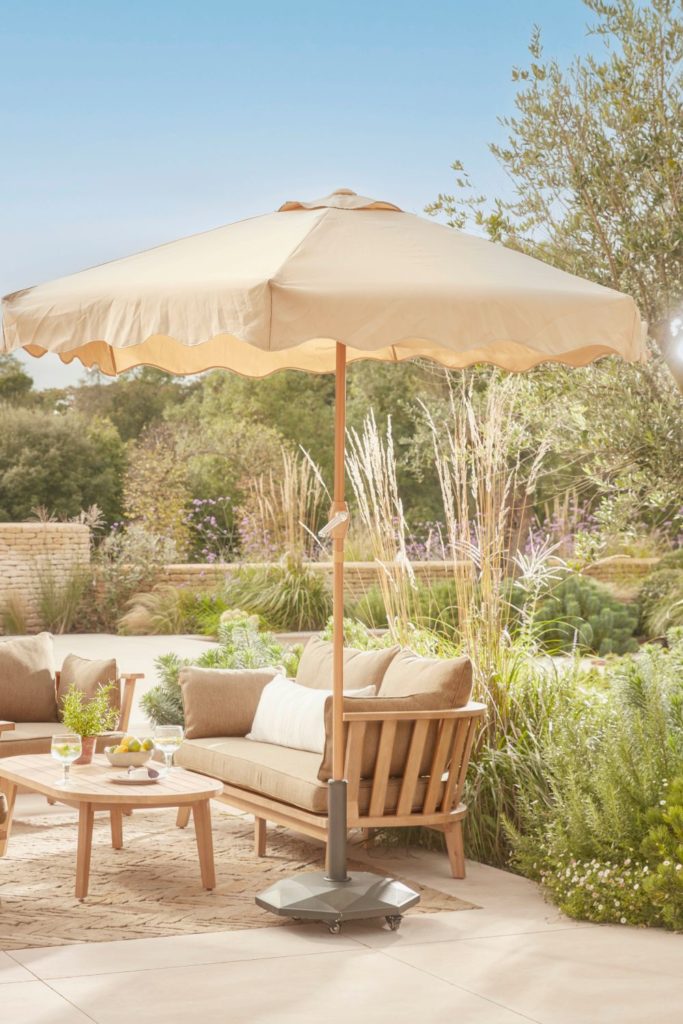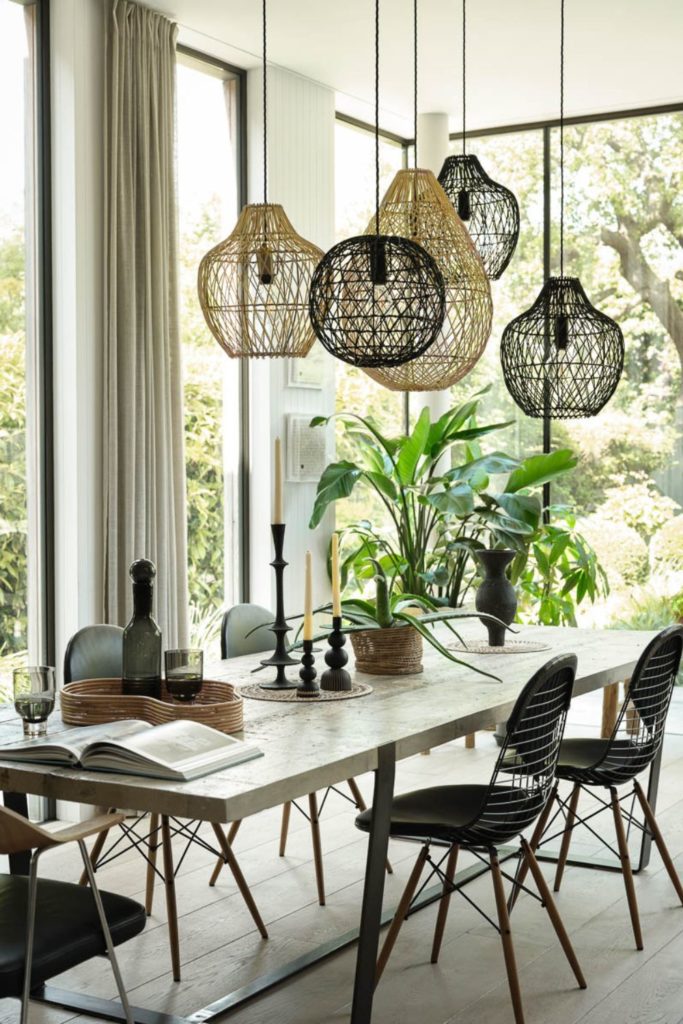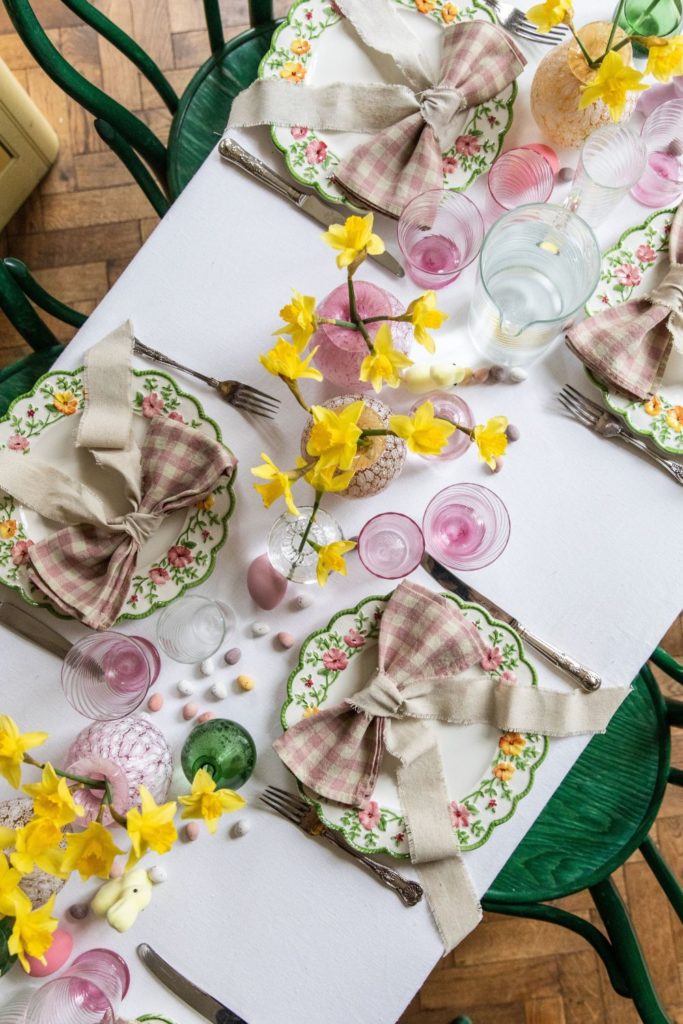How To Paint Your Own Lampshades
By
4 years ago
A masterclass with Natasha Mann
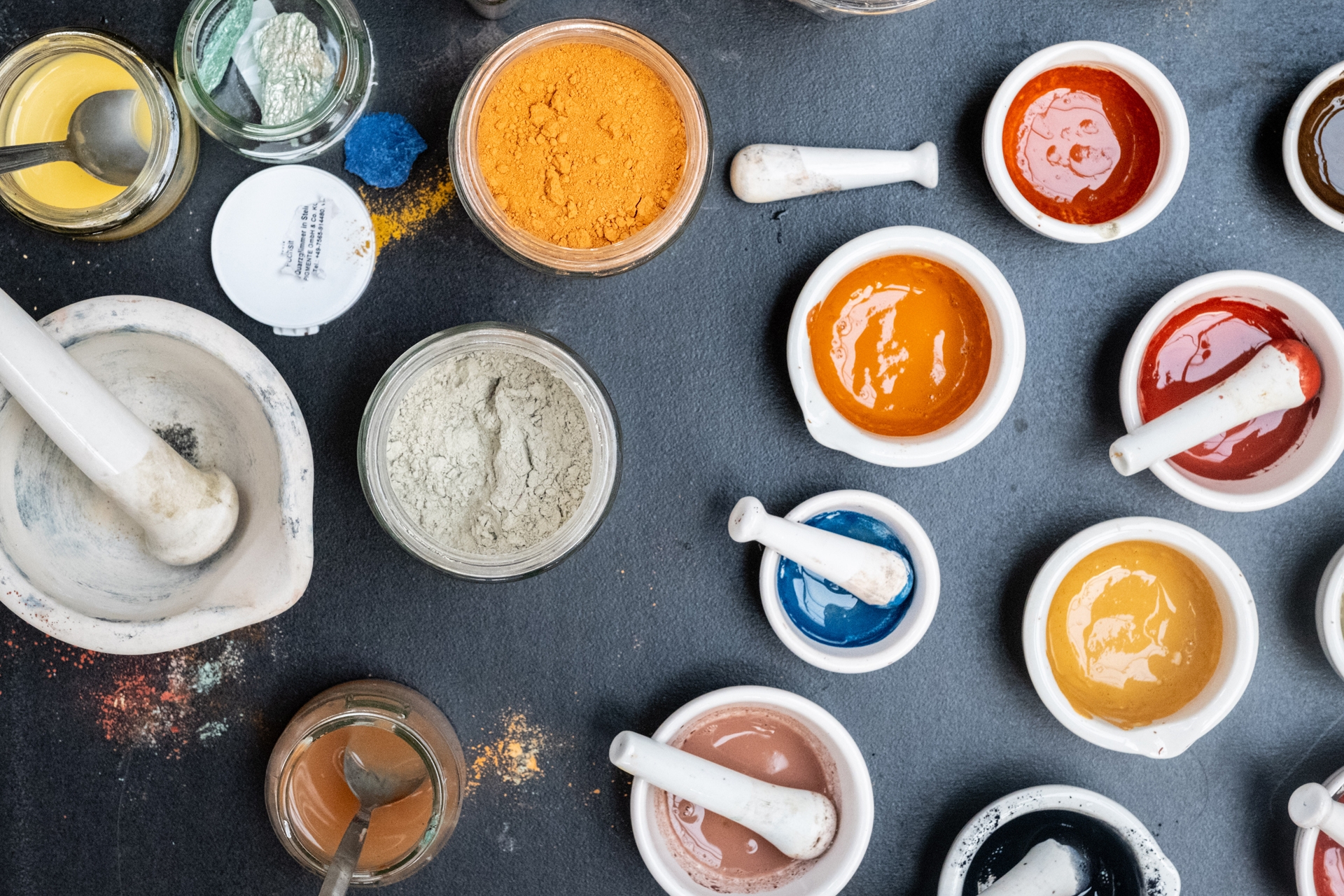
In partnership with Vaughan at Focus 2021 London-based artist Natasha Mann wowed with masterclasses at on how to paint breathtaking and unique lampshades. Learn how to create one of your own (and mix your own sustainable egg tempera paint) with her expert tips below.

A Guide to The Art of Upcycling
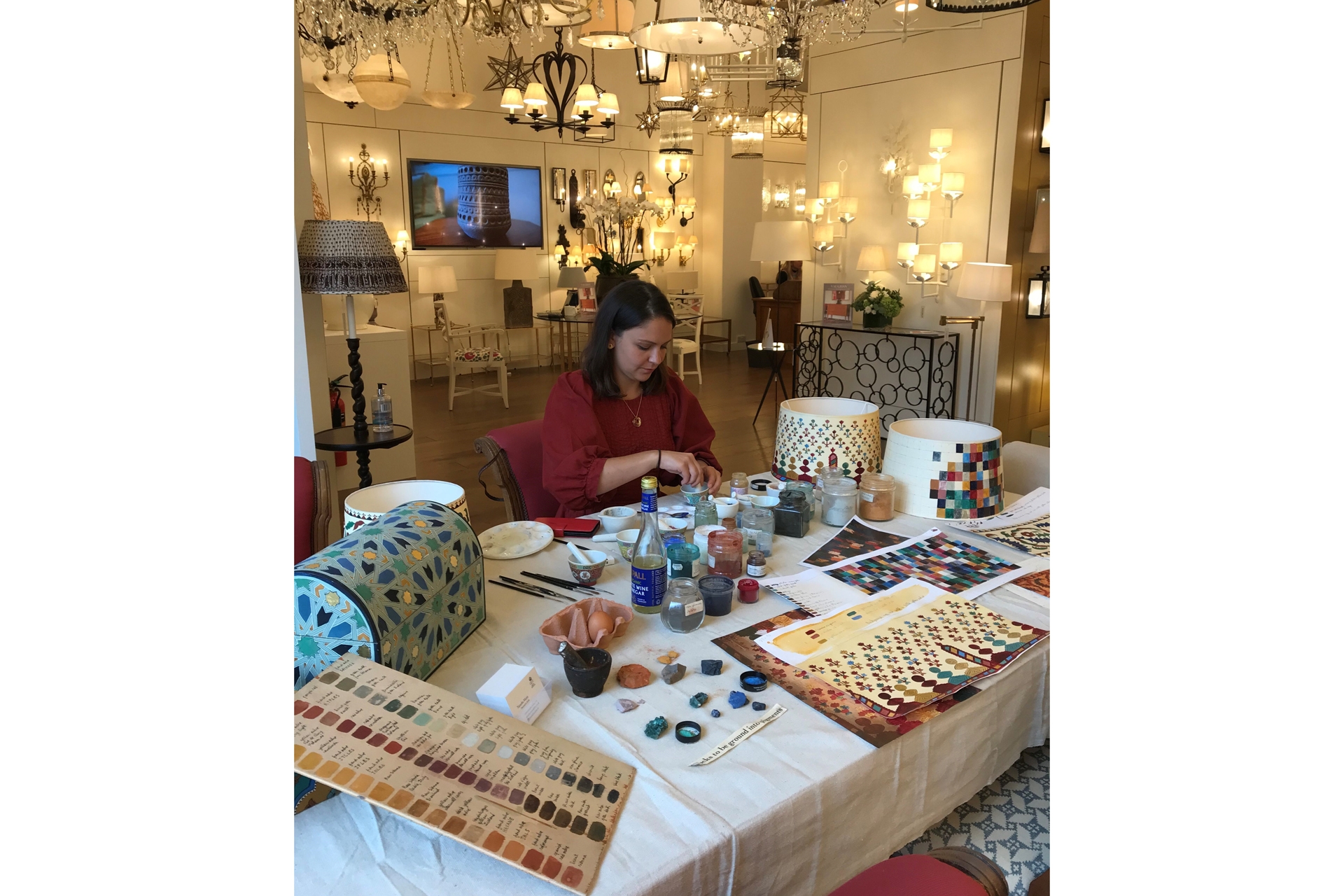
‘Before starting with a project like this, I like to use egg tempera,’ says Natasha. ‘Painting with natural pigments sourced from earth, mineral stones and plants is far better for the environment than ready-made paints and the colours found in nature often work more harmoniously together. There is great satisfaction to be had in knowing where your materials come from and that you have made them. Natural pigments can be mixed with many different binders but egg tempera is a good way to start and is surprisingly easy to do yourself from home. The background surface needs to be firm, so wood can be a good medium as well as strong card used in lampshades.’
How to paint a lampshade using egg tempera
Collect your materials
Before you start you’ll need the following materials:
- A plain card lampshade. It is important that the shade is made from plain card and is not laminated so that the paint adheres to the shade. Vaughan sells excellent plain card lampshades that can be purchased online
- Ready-ground pigments. These can be purchased online at kremer-pigmente.comor at the art shops L Cornelissen & Son or AP Fitzpatrick, both in London
- One or two eggs
- Vinegar
- Water
- Brushes
- Tracing paper
- A tape measure
- Mini pestle and mortars or a paint palette
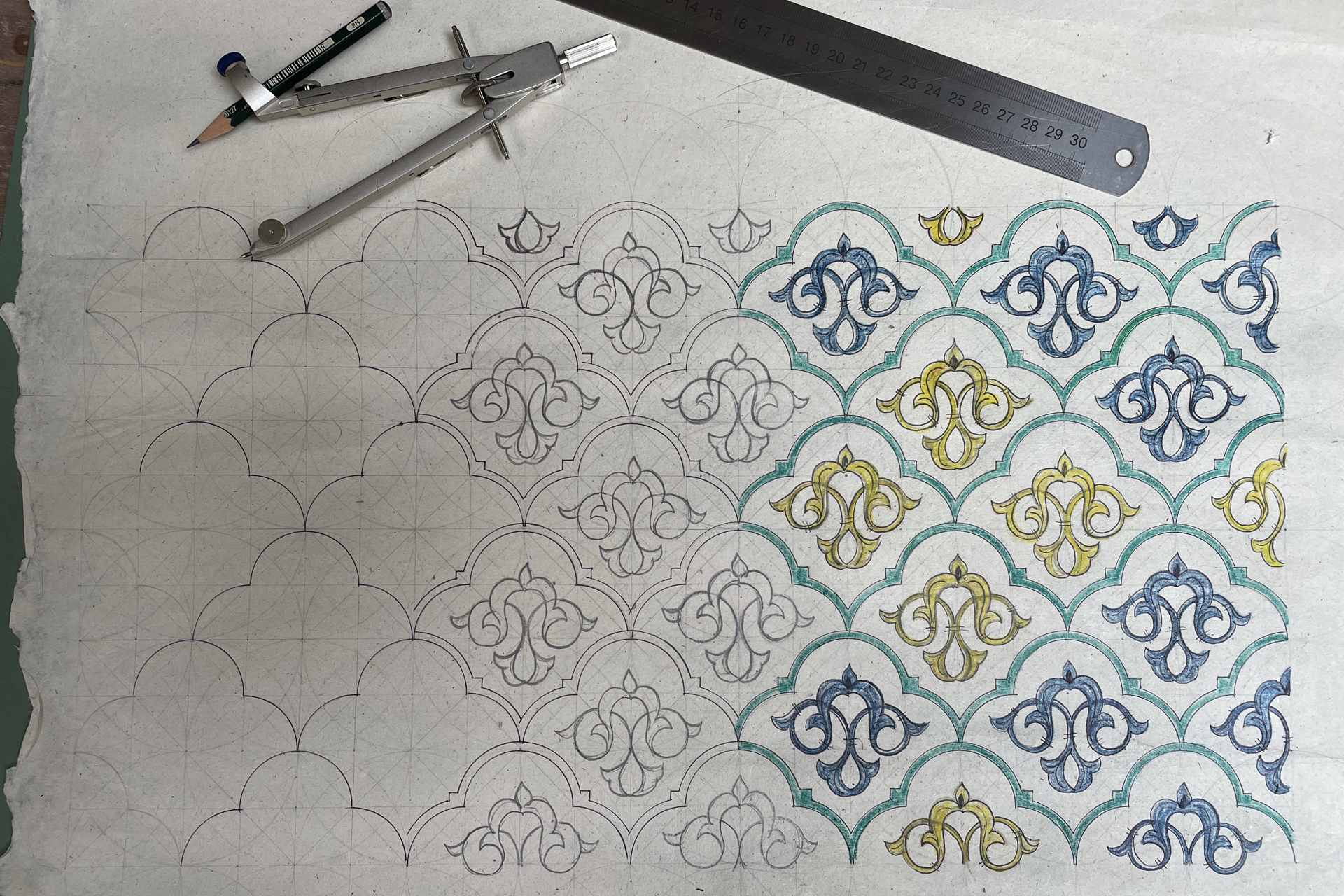
Finding design inspiration
Inspiration for designs could come from looking at textiles in the room the shade will be in. This can also help inform the colour choices. You could also try sketching a segment from a rug or a cushion and using it on your lampshade, or looking through coffee table books on pattern and textiles from around the world for inspiration.
Planning your design
Measure the circumference of the lampshade at the top and the bottom with a tape measure or a piece of string. Choose a segment of your pattern that you want to use as a repeating design and measure it. Next divide the circumference of the shade by the length of the section of the pattern you have chosen. It is helpful to make a template of the whole shade and then sketch out the sample flat to ensure that the pattern works well around the shade. If you do not want to use a repeat pattern you can start drawing straight onto the shade.
The Best Eco Friendly Paint Brands
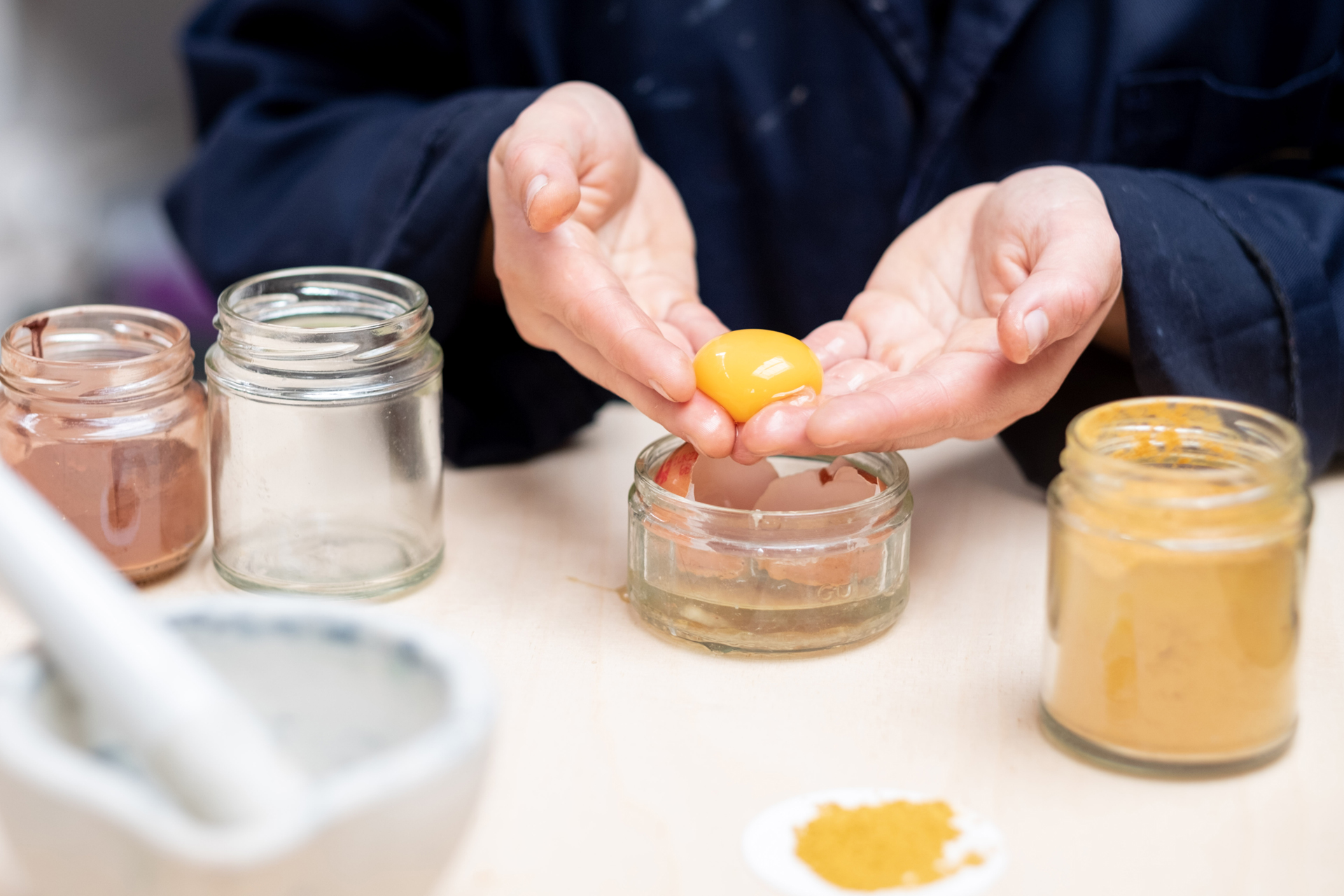
How to make egg tempera
Separate the egg yolk from the white, being careful not to break the yolk. Hold the yolk in between your thumbs and index fingers and gently press onto the yolk to burst the sack. Allow the yolk to trickle through your fingers into a small bowl and then discard the sack. Add a teaspoon of white wine vinegar and one of water and mix into the egg yolk. This is your egg tempera mixture.
To make your paint, add a spoonful of pigment into a small bowl or a paint pallet with a teaspoon of the egg tempera solution, then mix together. Repeat this for all the colours you will be using in your painting.
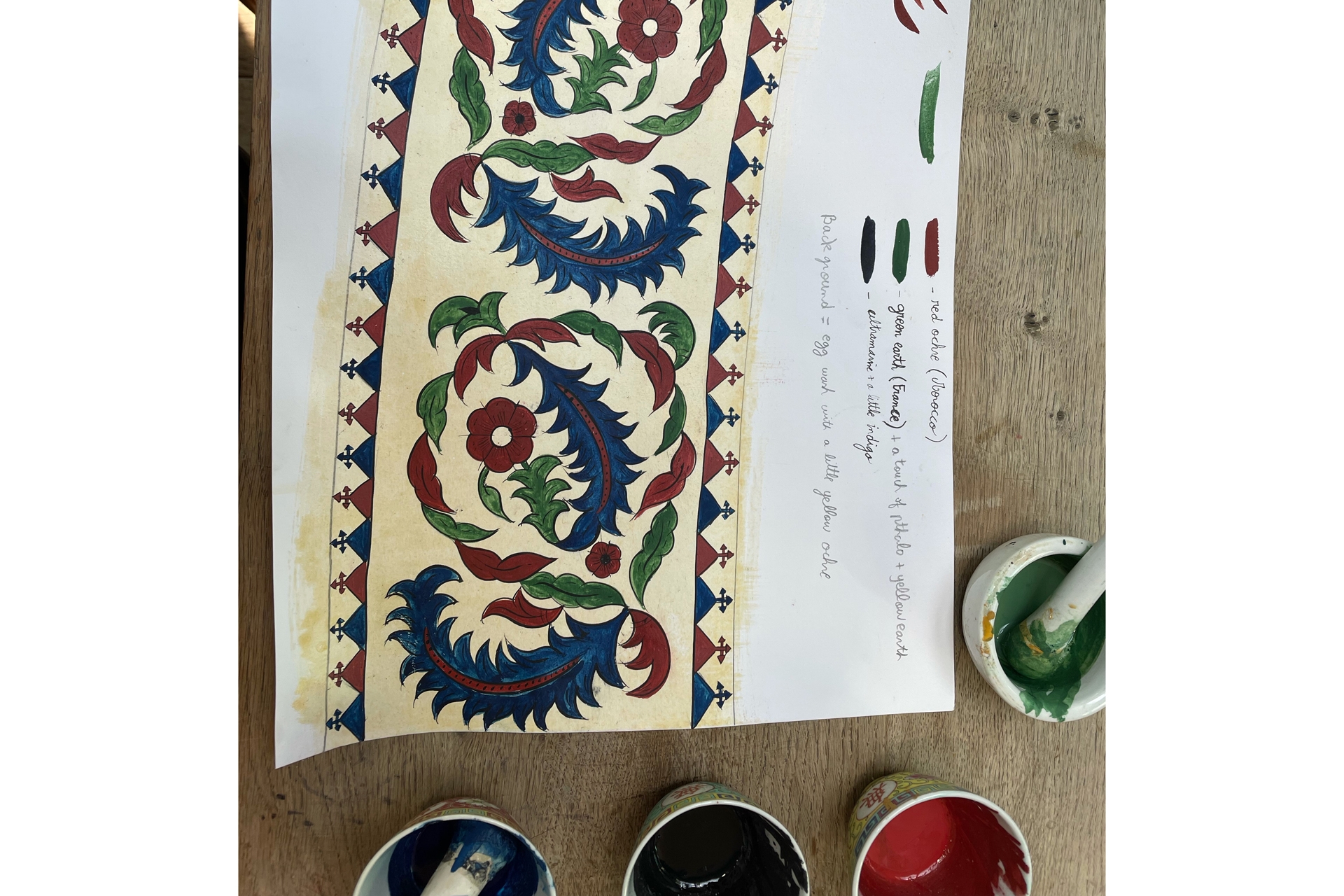
Prime your lampshade
Before painting onto the shade it is necessary to prime it first with a layer of diluted egg tempera solution using a large brush. If you would like a background colour you can add a small quantity of pigment to this mixture, but make sure it’s not too thick as egg tempera can be quite opaque.
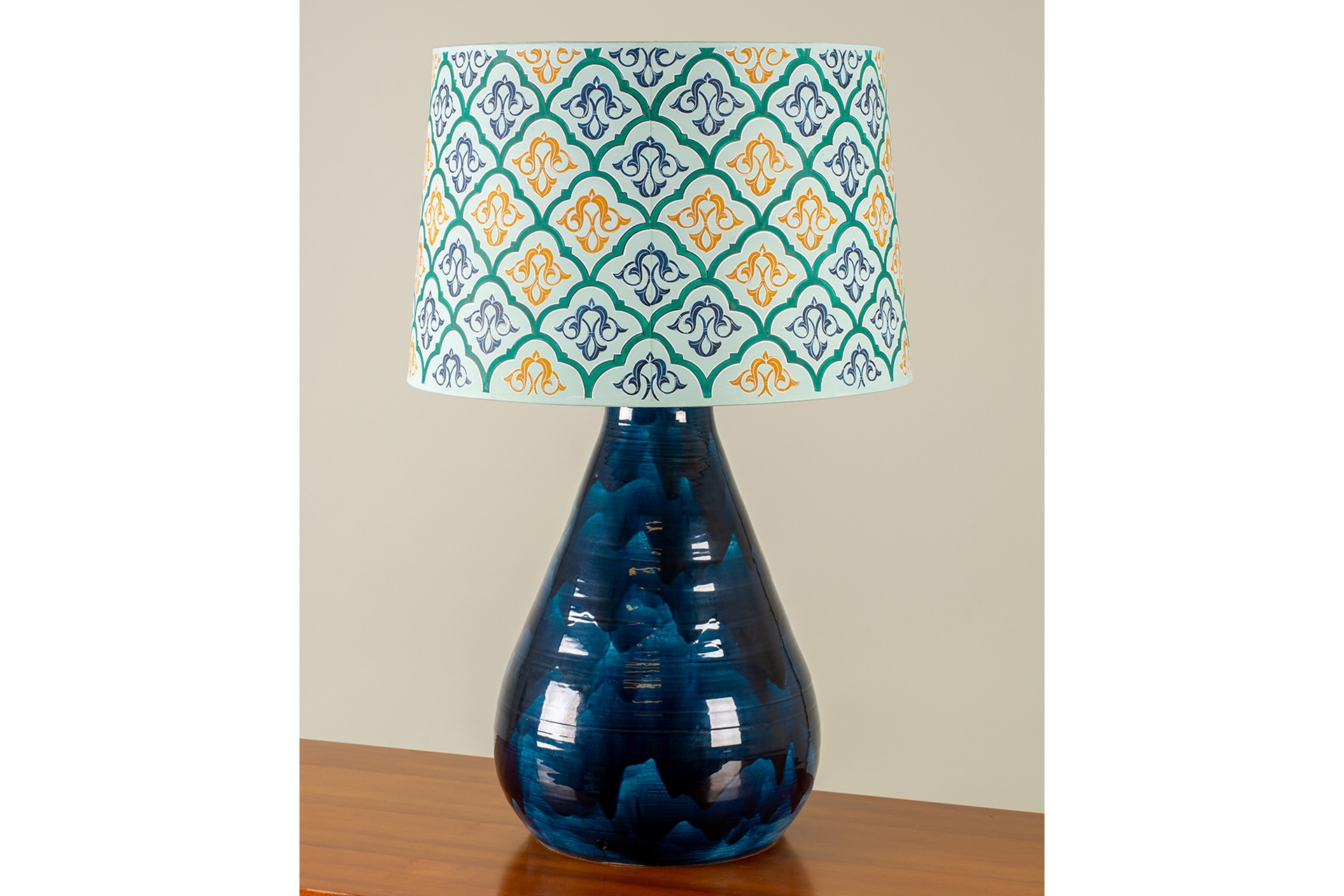
Transferring the design to your shade
Trace a section of the repeat pattern onto tracing paper. Once the shade is dry, turn the tracing paper over and draw over the pencil lines to transfer the image onto the shade. Be careful to not press too hard so as to not damage the shade and keep the pencil lines faint.
Painting the shade
Once the design has been transferred onto the lampshade, paint over your tracing lines using the paints prepared earlier. Ensure the brush is not too wet so that the paint doesn’t drip.
Follow Natasha on Instagram @natashamann.art. For more information go to natsaha-mann.com

